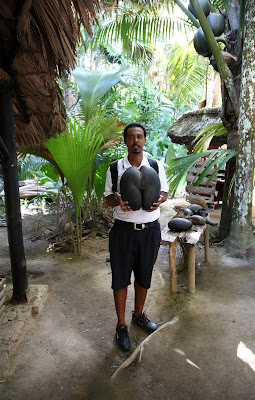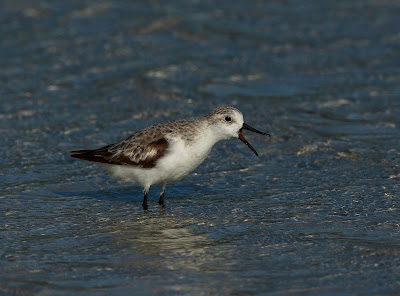This blog is a place for the members of the PLY ry to publish their trip descriptions and experiences. The PLY ry is a registered non-profit associaton that is interested in bird-watching and fosters bird conservation and research. The PLY ry has been established in 1959 and it is the oldest local association in Finland. The PLY ry is also the association that founded the parent association Birdlife Finland. The PLY ry operates in Finland west coast. Its most important form of activity is to observe birds and record the findings. That is a way to gather reliable and extensive information that has also scientific significance.
This blog has numerous writers. The form of texts is completely free. Photographs are desirable but not a must. Texts are sometimes humorous and bird nicknames are used commonly. At least one writer uses fake bird names but they are so silly that they don't fool anyone.
Comments to the texts are welcome and desirable. Comments can be sent through the link that is marked as "0 kommenttia" or "lähetä kommentti" in the end of each text. "Jätä kommentti" is the comment text itself. "Sanavahvistus" is a sort of confirmation and means that the green text must be written in the field. "Anonyymi" means that the comment can be sent as anonymous. "Julkaise kommentti" is to publish the comment.
SEYCHELLES BACKGROUND:
Seycelles is an archipelago in the Indian Ocean, northeast of Madagascar. Geographic coordinates are 4 35 S, 55 40 E. The archipelago consists of 40 granitic islands and for groups of coral islands that lie west and southwest of Seychelles. Coral islands are referred to collectively as outer islands and their distance from Victoria (the capital of Seychelles) is from 140km to 1150km. The granitics islands are referred to inner islands and their distance from Victoria is from 5km to 105km.
The climate of Seychelles is hot and humid all-year around. The climate is influenced by two wind systems, each of which dominates for roughly half the year. The southeast monsoon blows from May to October in the granitics and the northwest monsoon blows from November to April. Temperatures are 25-30°C during the southeast monsoon and about 3° higher during the northwest monsoon.
REFERENCES:
In terms of birds the Birds of Seychelles (later BoS) has been used as a reference book. References has not been used consistently but if any sentence appears to be rational it is probably quoted.
GETTING DOWN TO THE BUSINESS:
This text is the first description of the expedition to the Seychelles in October 2008. Lets start from the airport.

Mahé's international airport.

A glimpse of the granitic islands.
The first trip was to the Vallée de Mai.Vallée de Mai is one the world's smallest natural World Heritage Sites. This quiet secluded valley is the heart of the Praslin National Park and is the home to the famous coco de mer palm. The palm has two suggestive shapes of both male and female structures which occur on separate coco de palms.

Female palm grows to about 24m high. The female palm's seed can weigh more than 20kg.

Is the seed suggestive of something or not?

Male palm grows to about 30m high. It has brown catkins.

Jackfruit (introduced)

This is a female spider that has made a bad habit of eating its tiny partners after mating. Spider is about 7cm long feet included.
Vallée de Mai is undoubtedly a paradise for a botanic and sometimes for a birder too. This time Vallée de Mai didn't reveal its birds, so it was good to return back to the sea level.

Praslin beaches were not overcrowded

and they were not overdogged either. Some dogs used to patrol along the shoreline but they were completely harmless.

A small gecko climbed on the wall and the ceiling. It stayed mostly in the hotel balcony but visited the room too. A nice-coloured creature and of course absolutely harmless.
Now it is finally time to get to the birds! One reason to come down to the Seychelles was to see the Seychelles Black Parrot. The following shots are from the hotel balcony in Praslin around five o'clock PM. Seychelles Black Parrot is endemic to the Praslin group occuring on both Praslin and Curieuse. In 1997 the total population was estimated at 200-300 birds (Bos).


Seychelles Swiftlet, the only resident swift, is endemic, breeding Mahé, Praslin and la Digue. In 1997 the total population was estimated at 1,000 pairs and 2,500-3,000 individuals (BoS).

Swiftlet's flight is so twisty that it took hundreds of frames to get at least a modest shot.

Barred Ground Dove is a common introduced resident in the granitics and some outer islands (BoS). It used to exploit the crumbs on the restaurant tables.

Common Myna is introduced and very common through the larger granitic islands (BoS). Myna is ubiquitous and omnivorous so it is easy to predict that it will survive.

Seychelles Bulbul, endemic to the granitic islands, is a common resident in suitable woodland at all levels, though less frequent at sea level (BoS). This shot is, however, just at the sea level.

Madagascar Fody is by far the most common small passerine on most of the granitic islands and some outer islands (BoS). It is easy to confirm the preceding statement.

Seychelles Sunbird's name is Kolibri Sesel in the Creole language. Locals used to call it just a Kolibri. It is very common endemic found throughout the granitic islands (BoS).

Male has yellow pectoral-tufts and it looked like the bird flashed them sometimes.

The Sunbird doesn't live only in the jungle. This one takes a sip of nectar in the balcony.

Green Backed Heron is highly territorial and was not delighted with visitors.

Greater Crested Tern is common in the granitic islands, breeding in the outer islands (BoS).

In flight

and diving into water.

What a shame! No catch and it appears that the damned tern paparazzi photographed the whole failure.
My birthday seemed to turn out a total disappointment as no one of my friends showed up. At last a VIP from the distant Aldabra atoll turned up.

Crab Plover was the only birthday visitor, but it was the most pleasing one.

Aerial show was readily arranged

as was the run show

and some acrobatics.
Sanderlings have always been at loggerheads with Crab Plovers. Some things don't change.

Hi Crabbie! Is it true that your parents were absolutely shocked when they saw your huge and ugly bill for the very first time? Your appearance is so comical that I am in stitches every time I see you.

Let me tell you something Sandie. I am actually your grandfather. As you grow up you turn gradually a Crab Plover too. You should think twice before you make fun of my bill.
.
This is the end of the first part of the expedition description to the Seychelles. Next episode is about a trip to Cousin, Couriese and la Digue islands.
And again, comments are highly appreciated.
.
.
Hannu Rinne


2 kommenttia:
Thanks for this post. Seychelles Island is a worth visiting place. Here 115 islands are worth calling as ”Paradise on earth”. There are many islands who are unfazed by the modernization. Here harmless people are ensconced with their own culture and traditions. Don't fail to visit Seychelles in your next vacation. You can enjoy many activities like scuba diving, snorkeling, parasailing, and sailing etc.
I have seen these pictures and other you did later. Good job. I am very interested to the pictures of crab plovers. Some of them have rings on the legs. As I banded some crab plovers in Eritrea I would like to contact you for some some details.Could you please contact me?
Giuseppe De Marchi (dromasardeola@gmail.com)
Lähetä kommentti